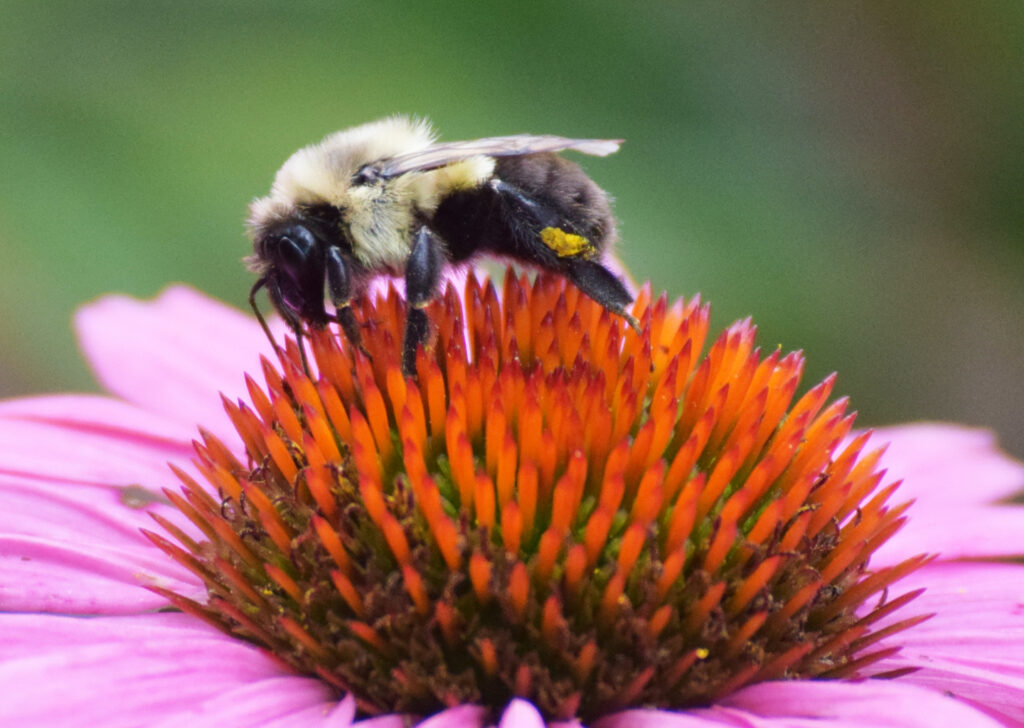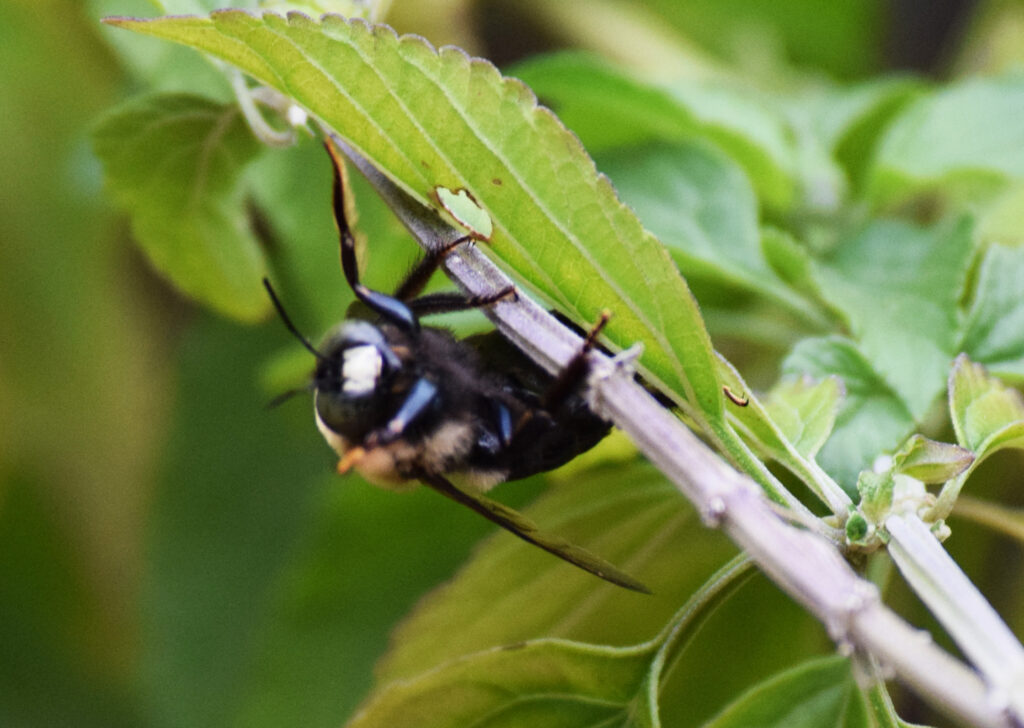Carpenter bees are one of South Carolina’s most misunderstood native pollinators.
Let’s face it: they have a bad rap. People often think of them as pests due to the holes they bore in the wooden structures of homes and businesses, hence their “carpenter” namesake. If you see a cigar-sized hole in a wooden beam and sawdust beneath the opening, you may have a carpenter bee on your hands — but carpenter bees do more good than harm.

Why You Shouldn’t Kill Carpenter Bees
Carpenter bees are valuable native pollinators in South Carolina. While their larger size and solitary lifestyle make them less efficient at removing pollen from flowers as their native bee relatives, they can become primary pollinators of open-faced flowers where honeybees are absent. Carpenter bees are known for “buzz pollination.” They vibrate their powerful back muscles so loudly that the sound energy shakes the pollen out of the flowers onto their hairs. They’re especially good pollinators of eggplant, tomato, and peaches, to name a few fruits and vegetables.
Carpenter bees are one of the largest bees native to the United States. They’re often mistaken for the similar-sized bumblebee, but it’s easy to tell the two apart if you know what to look for. Carpenter bees have smooth, black abdomens whereas bumblebees have hairy abdomens with a yellow band. Both are essential native pollinators.
Another misconception about carpenter bees is the fear of being stung.
The male “drone” bees that do most of the territorial buzzing around, like all other male bees, do not have stingers. They can be protective of their territory, but their only defense is to aggressively buzz around your head. While females d have stingers, they’re more interested in attending to their nests and caring for their young than stinging you. In fact, they will only sting when directly provoked. You can tell the difference between male and female carpenter bees because the males have white on their faces and only the females drill tunnels.

Bottom line: Carpenter bees are worthy South Carolina natives who help pollinate our farms, gardens, and ecosystems.
Usually, any structural damage is minor and carpenter bees can be left alone without causing anyone harm. Of course, it’s reasonable that property owners would want to stop any damage before it becomes a problem. Carpenter bees are particularly attracted to pine and cedar, which are common building materials here in South Carolina. In this case, consider using non-lethal techniques for deterring and removing them from your home or business.
Humane and Non-Toxic Ways to Remove Carpenter Bees
Pesticides do not work.
Contrary to popular belief, carpenter bees do not eat wood. Therefore, insecticides applied to wood may not expose the bees to a lethal dose. It’s also impractical to try to apply pesticides to every wooden surface that might attract the bee. Other essential, native pollinators are sensitive to pesticides, however, and you could be exposing toxic chemicals to many more species than the bee you intended.
Prevention is the best way to avoid carpenter bees.
Apply oil-based or latex paint or stain to wood to help deter bees from moving in in the first place. In the spring, you can also apply almond oil or citrus spray over wooden surfaces, two fragrances that repel carpenter bees. Lure and fill. Typically, these methods aren’t as useful once carpenter bees have already moved in, but you can give them a try. These scents, as well as loud music and vibration, are said to send carpenters’ bees on a hike, temporarily. Once the bees have been lured out of their tunnels, you can fill the holes with wood putty or steel wool.
Use a carpenter bee trap.
Carpenter bee traps are non-toxic ways to lure carpenter bees out of their hole and trap them. Once they’re trapped, you can fill the tunnels with wood putty or steel wood and release the bees somewhere else. (Examples below)







